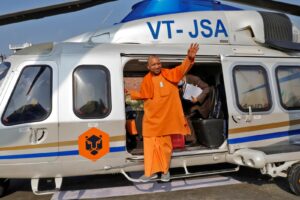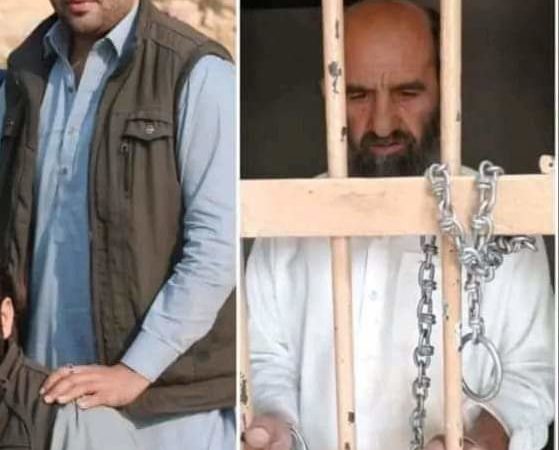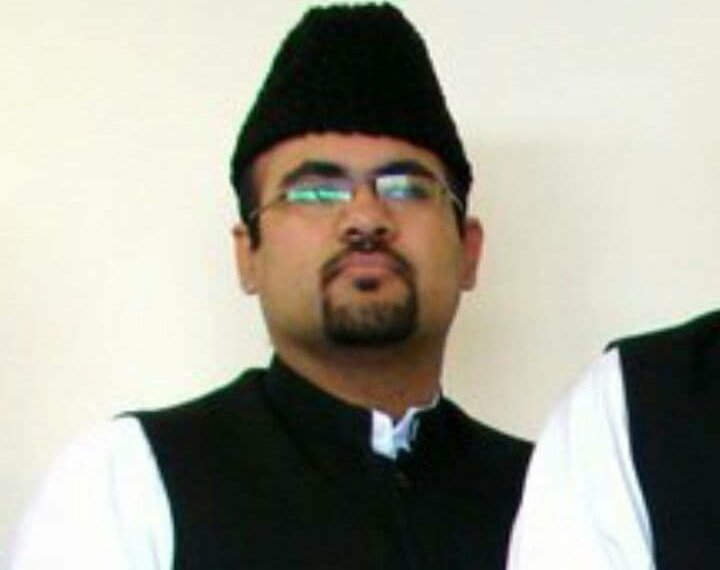The Unstoppable Rise of Hindu Nationalism

On March 25, Yogi Adityanath—a saffron-clad monk from the right-wing, Hindu-fundamentalist Bharatiya Janata Party—was sworn in for a second term as chief minister of the Indian state of Uttar Pradesh. For two hours that morning, temple bells rang at ceremonies organized across the state to mark the occasion. It was in keeping with the image that Adityanath has sought to project: heir to Indian Prime Minister Narendra Modi, and a leading figure in the BJP’s attempt to turn India into a Hindu nationalist state.
Adityanath’s victory was a remarkable feat. He is the state’s first chief minister to win reelection in the past 30 years, and he did so despite his government’s disastrous mishandling of the COVID-19 pandemic. The state has a large and underreported pandemic death rate, and for weeks, bodies floated down the Ganges River. Patients struggled to cpe with insufficient hospital beds and oxygen scarcities. But the BJP nonetheless captured 255 of the 403 seats in the state legislature, a margin that exceeded even its own expectations.
Uttar Pradesh is India’s biggest state, home to a population of over 200 million people and accounting for 80 out of the 543 seats in the national parliament. When the BJP first selected Adityanath to be its chief minister after sweeping the state’s 2017 elections, many analysts were surprised. Adityanath had served as the head of a prominent Hindu seminary and had been indicted for threatening violence against Muslims. His extremism—Adityanath once called Muslims “two-legged animals” whose “production” needed to stop—was out of line with the party’s professed commitment to emphasizing economic development.
But Adityanath’s attitude was indicative of the central government’s plans, and he has helped amplify Modi’s agenda. In late 2019, India passed new citizenship laws that distinguished Muslims and Christians from people belonging to religions that originated in India, namely Hindus, Sikhs, and Buddhists. The laws, which threaten to strip citizenship from hundreds of millions of people, provoked widespread protests. Adityanath’s state government responded with harsh measures, including seizing property from demonstrators (a penalty that was halted by the Indian Supreme Court). Attacks on Muslims have increased across India since Modi took power, most recently during an April 10 outbreak of communal violence that coincided with a Hindu festival. But the upsurge has been particularly acute in Uttar Pradesh, where Adityanath has carried out a “law-and-order” policing campaign that disproportionally kills Muslims.
Many analysts have chalked Adityanath’s reelection up to direct cash transfers and food deliveries to the poor during India’s severe lockdown. But this makes little sense; the BJP performed worst in some of the poorer regions of the state. And Adityanath’s win is part of a broader trend. Despite a sluggish national economy, the BJP has had a remarkable series of victories across the country, including Modi’s triumph at the federal level in 2014, his surprise overwhelming reelection in 2019, and a series of other state victories—many in places where Hindu nationalists had never before found success. Of the six state contests decided this February and March, the BJP won five.
The secret to the BJP’s successes is far deeper—and far darker—than economics. For years, Hindu nationalists have worked to consolidate various parts of the faith into a unified political movement. They have very successfully organized high-caste Hindus, who sit at the top of the religion’s hierarchy and make up most of the Indian elite. But the party has managed to gain support from many marginalized, low-caste Hindus as well by emphasizing that they, too, belong within Hinduism and by providing them with representation, almost all in the party’s lower ranks. The BJP has also fostered and weaponized Islamophobia to great effect, further unifying the country’s 966 million Hindus while making life increasingly difficult for its nearly 200 million Muslims.
The result has been a discriminatory political juggernaut that—as the state elections show—reaches its limits only at the literal edges of India, mostly in states where Hindus are not the overwhelming majority of residents. It will lead to the hardening of India’s tiered democracy. Muslims already do not enjoy the same rights in practice that other citizens do, and regions on India’s borders, such as Kashmir, are watching as the Indian government increasingly uses the military to restrain dissent. As the BJP’s power grows, both discrimination against Muslims and the repression of outlying states are likely to worsen.
A CENTURY IN THE MAKING
In 1925, a doctor from central India named Keshav Baliram Hedgewar established the Rashtriya Swayamsevak Sangh, a far-right paramilitary group dedicated to creating a unified Hindu faith. From its inception, the group disdained Muslims and Christians, and its architects drew inspiration from European fascists as they built their organization. Madhav Sadashiv Golwalkar, the RSS’s leader from 1940 to 1973 (and still its most influential figure), endorsed Adolf Hitler’s Final Solution as a model for how India should deal with its Muslims.
The Indian government briefly banned the organization in 1948, after a longtime member assassinated Mahatma Gandhi. But over the following decades, the RSS gained respectability as it found just slightly more subtle ways to menace Muslims. In 1983, for instance, the RSS, through one of its affiliate organizations, launched a movement to tear down a famous mosque in the Uttar Pradesh city of Ayodhya and replace it with a Hindu temple. Three years earlier, it created a new political party—the BJP—in order to contest and win elections. The BJP soon caught on at the state level, capitalizing, in part, on the Ayodhya temple movement. In 1991, it won an election in Uttar Pradesh for the first time. A year later, the state administration and police stood aside as a large mob led by senior party leaders illegally demolished the mosque.
This violence did little to deter upper-caste Hindus—namely Brahmins (the traditional priestly caste), Kshatriyas, (the warrior caste), and Banias (the trading caste)—from becoming BJP supporters. They are a powerful bloc. Although these castes account for less than 15 per cent of the Indian population, they control much of the country’s intellectual life and its finances, and they have been attracted by the BJP’s message of Hindu greatness, which feeds directly into the self-image of the upper castes (and which accompanies the party’s Islamophobia). Many also saw the BJP as a bulwark against various smaller parties that drew support from lower-caste groups.
But the RSS also began building support among lower Hindu artisanal castes, and even among the traditionally oppressed Dalits. It has done so by taking advantage of the almost infinitely graded hierarchy of caste, working to get votes from the Hindu groups not well represented by India’s political parties. Even political parties that represent an overarching caste group, such as Dalits, tend to be dominated by the group’s largest member caste. This has allowed the BJP to reach out to other members and win them over. Although each such caste was not numerically very large, by accumulating support from many of them, the BJP was able to build a substantial political base.
Indeed, even communities lying outside the fold of Brahminical Hinduism, such as India’s more than 75 million Adivasis—people who belong to the country’s aboriginal groups—have begun to support the BJP in large numbers over the past three decades. That is, again, thanks in part to the RSS’s efforts. Through its affiliates, the RSS has opened hundreds of schools among the Adivasis, and it has labored to inculcate a Hindu ethos in regions where it was largely absent. The organization has also worked with missionary zeal to try to match various Adivasi deities with members of the vast pantheon of Hindu gods, turning traditional Adivasi religious observance into a manifestation of Hinduism. Notably, the RSS refuses to use the term “Adivasi” since it denotes original inhabitants, and the organization insists that the Indian subcontinent’s first people were Hindus. (Instead, the RSS refers to these aboriginal groups as Vanvasi, or forest dwellers.)
Today, the RSS has tens of millions of members, making it perhaps the largest nongovernmental organization in the world. It is certainly one of the most powerful. The RSS lies at the center of a vast web of groups, including one of India’s largest trade unions. It boasts a students’ association, a teachers’ wing, a women’s wing, and a lawyers’ association. The BJP now has an annual income more than five times as large as its main political rival, and it is broadly backed by the media—in no small part because the press is largely controlled by upper castes.
But even as it has grown, the ideological core of the RSS has remained unchanged. According to its doctrine, citizens of India must believe that their country is not just their motherland but also their holy land—a definition designed to leave out Muslims and Christians, whose most sacred locations lie elsewhere. The RSS has been named in many of the country’s most prominent cases of mob violence targeting both religious groups. In 2002, it helped carry out a violent pogrom against Muslims in the state of Gujarat. At the time, Modi was the state’s chief minister.
The violence has, in turn, further empowered the RSS. Modi won reelection in Gujarat by playing on anti-Muslim violence, referring to relief camps for Muslim victims of the Gujarat pogroms as “baby producing factories.” He won reelection as prime minister by drumming up fears of Muslims entering India from Bangladesh. And his choice to lead Uttar Pradesh, Adityanath, won reelection by describing the contest as a battle between the 80 percent and the 20 percent: a clear reference to the state’s 40 million Muslims, who represent roughly 20 percent of the population.
Adityanath’s “80 versus 20” language also illustrates his party’s national electoral strategy. Most of India, like most of Uttar Pradesh, is Hindu, so if the BJP can polarize the country along neat religious lines, it can easily win power. It is a strategy that appears to be succeeding. It is, after all, hard to come up with an alternative explanation for why Modi and Adityanath have stayed in office. In terms of secular governance, there is little that either has done that stands out. Since Modi came to power, the Indian economy has grown significantly more slowly than it did under his predecessor, and internationally the country is at a loss for ideas. China keeps squeezing India along the two countries’ long and poorly defined border. India’s continued dependence on increasingly outdated Russian arms, despite Modi’s repeated declarations that India must be self-reliant, has left the country unable to take a clear position on the Ukraine war. Adityanath, meanwhile, has presided over similarly lackluster growth and a humanitarian disaster.
But for those who support the two leaders, such issues are secondary to their real achievements. As the RSS prepares to celebrate its centennial in 2025, its vision of a Hindu nation is more tangible than ever. Modi has trampled on the autonomy and rights of Kashmir, India’s only Muslim-majority state. His citizenship laws are marginalizing hundreds of millions of non-Hindus. Adityanath has aggressively persecuted his state’s Muslim population, as well. Now that he will govern Uttar Pradesh past the RSS centennial, it seems likely that the organization will finally construct a massive temple in Ayodhya—at the exact site where the mosque was illegally brought down.
MARGINAL AND MARGINALIZED
Can the RSS be stopped? There are certainly limits to its cultural project. Although the BJP overwhelmingly won the most recent batch of state elections, it overwhelmingly lost the northwestern state of Punjab, taking just two of its 117 seats. The reason for that is both clear and telling: over 60 percent of Punjab’s residents are Sikhs, for whom the promise of a “purified” Hindu nation holds little appeal. The BJP has also been effectively locked out of the southern state of Kerala, where more than 40 percent of the population practices a different faith, and where even the Hindus have a strong sense of a distinct cultural identity. Finally, it has been unable to break through in India’s southernmost state, Tamil Nadu. This last state is an interesting case; among the regions that lie outside the BJP’s reach, it is the only one that is overwhelmingly Hindu. But, as in Kerala, Tamil Nadu’s Hindus have a strong cultural identity of their own, and it is not within the RSS’s Brahminical vision.
These states, however, all fall on India’s periphery. Everywhere else, the BJP is either in power or not far from it, including in places where the party’s brand has long been toxic. In March 2021, for example, the BJP came in second in the eastern state of West Bengal, which traditionally leans left and has a Muslim population of nearly 30 percent. It is an accomplishment that is difficult to overstate. Before 2021, the party had never won more than three seats in its 294-person legislature, and it had not received more than 11.4 percent of the vote. In 2021, it won 77 seats and 38 percent, respectively.
India’s core is already bigger than its outlying areas, and its population is growing faster than theirs. The current allocation of seats to the Indian Parliament is based on the 1971 census, and a long-overdue readjustment would have to give even greater weight to states such as Uttar Pradesh, where the BJP is strong. Indeed, the BJP’s hold on power in India seems so secure, and so set to grow, that its ideology is unlikely to be challenged even by opposition political parties. Today, no organization can hope to seriously bid for power by alienating the expanding Hindu core of the country.
It seems likely, then, that the RSS will eventually succeed in imposing its vision on dissenters—both those within its central states, such as the Muslims of Uttar Pradesh, and those who lie outside, such as the Sikhs and the Tamils. The result will be oppression on an enormous scale. More than 400 million people either do not subscribe to Hinduism or do not practice the kind of Hinduism that the RSS holds supreme. They will nonetheless be subject to what is, ultimately, an imperial project that attempts to homogenize the Hindu population while ensuring that India’s Muslims and Christians are relegated to second-class citizenship.
For regions in the periphery, this will mean the constant threat of forced cultural assimilation. For instance, the country’s home minister has announced that Hindi will be made compulsory until tenth grade (class 10) in the country’s northeast, which has no real links with the language. It will also mean a constant risk of facing economic exploitation. Kerala, Punjab, and Tamil Nadu far outperform India’s core on almost all development indicators, and the Indian union, where finances are centralized, already transfers these states’ wealth and resources to the areas which are doing far worse—and where today the BJP gets most of its support. This process will only be aggravated. For the Muslims within the core, the situation is set to worsen. They will face increasing political and economic marginalization, the constant threat of mob violence, and the constant threat of state violence. The ultimate result will be their complete disempowerment.
For the BJP, this disempowerment is both an ends and a means. The whole project of a Hindu nation has little meaning if it is not juxtaposed against an Islamic threat from within. Ironically, this means that even as the BJP seeks to reach out to the Dalits—the former untouchables—and bring them within the fold of Hinduism, it is succeeding in creating a new set of untouchables: the Muslims of India.
Courtesy: Foreign Affairs



